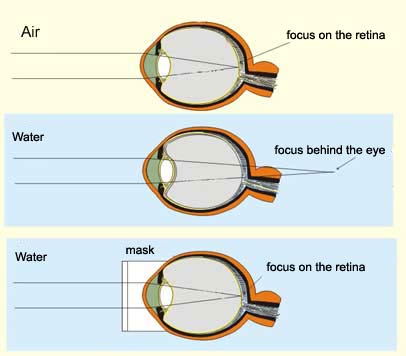Tool Module: Optics
What we call
light is the visible portion of the broader spectrum of electromagnetic waves.
Because of the wave-like nature of light, every light wave has a wavelength that
represents the distance between two succeeding peaks or troughs in its oscillations.
The human visual system can detect only a small portion of the electromagnetic
spectrum, corresponding to the wavelengths from 400 to 700 nanometres.
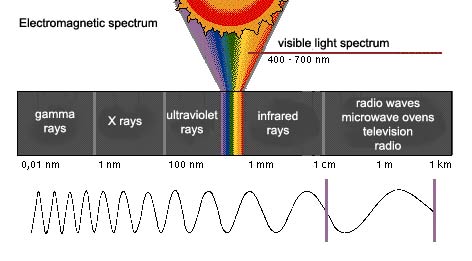
In a vacuum, electromagnetic waves move along a straight line, an image invoked by the expression "ray of light". But in the world we live in, these waves interact with the air, the water, and all the objects they encounter. Optics is the science of such interactions, and it distinguishes three main kinds.
| Reflection is a change in the direction of light rays striking a surface. This change in direction depends on the angle at which the rays strike this surface. The change is greatest if they strikes this surface perpendicularly, in which case the change will measure 180 degrees. Most of what we see in the world consists of light reflected by the objects in our environment. | 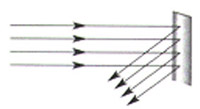 |
| Absorption is the transfer of light energy to a surface. Black surfaces absorb energy from all the visible wavelengths. This is why black objects become the hottest when left in the sun. But most objects have colour pigments that absorb only some wavelengths, while reflecting the others. It is these other, reflected wavelengths that give the object the colour that we perceive with our eyes. | 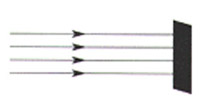 |
| Refraction is the bending that light rays undergo when they pass from one transparent medium to another (for example, when light passes from the air into the water of a pond). . This bending is due to the difference between the speeds at which light travels in the two media (in this example, light travels faster through air than through water). Thus, the aqueous media inside the eye refract the incoming light rays, causing them to converge on the retina. | 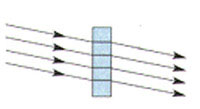 |
The speed of light in water is very close to its speed in the vitreous humour inside the eye. That is why your vision is blurry underwater: the refraction that normally takes place at the cornea in the air is almost non-existent underwater. But when you put on a diving mask, it re-establishes the interface between your cornea and the air, thus causing the light rays to be refracted and to converge on your retina once more.
